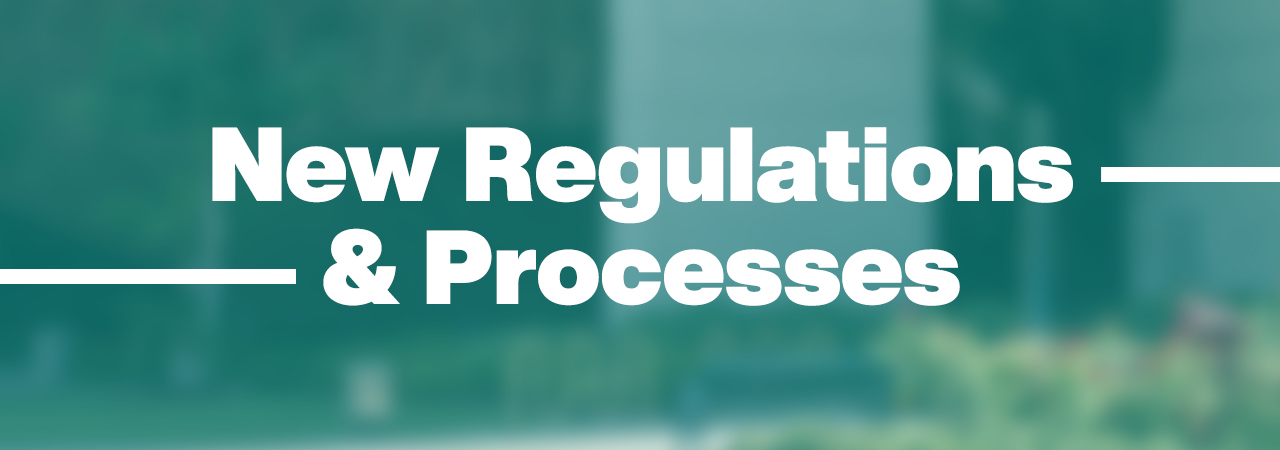
New Regulations & Processes
Upcoming Financial Aid Changes
FAFSA Simplification Act
The FAFSA Simplification Act calls for a sweeping redesign of the processes and systems used to award federal student aid. The law updates the Free Application for Federal Student Aid (FAFSA) process to expand access to federal student aid and provide a new FAFSA experience for students and families.
The California Dream Act Application (CADAA) will include some of the changes from the new FAFSA form, but the number of questions will not be reduced.
The FAFSA and the CADAA form usually opens October 1, but for the 2024-2025 academic year the applications will open December 31, 2023.
Benefits for Students and Families
Beginning the 2024-2015, the Student Aid Index (SAI) will replace the Expected Family Contribution (EFC) on the FAFSA and CADAA. The SAI is an evaluation of the financial resources that may be available to contribute towards a student’s education expenses. The implementation of SAI is a significant change to the need analysis formula used to determine students financial aid eligibility. The new need analysis formula also removes the number of family members in college from the calculation. The number of children in college will no longer affect eligibility for need-based financial aid. Finally, for FAFSA applicants, the new need analysis formula implements a separate eligibility determination criterion for Federal Pell Grants.
Changes to Pell Grants
The upcoming changes extends Federal Pell Grants to more students and utilizes one of three ways to establish eligibility.
| 1 | 2 | 3 |
|---|---|---|
| Maximum Pell Grant | Calculated Scheduled Pell Grant | Minimum Pell Grant |
| Non-tax filers; or Tax filers, based on: AGI, Poverty Guidelines, Family Size | Maximum Published Scheduled Pell Grant minus Calculated SAI | Based on: AGI, Poverty Guidelines, Family Size |
Pell Grant Annual Award and disbursement amount will now be calculated using “Enrollment Intensity” rather than enrollment status.
| Enrolled Credit Hours | Enrollment Category | Enrollment Intensity |
|---|---|---|
| 12 (or more) | Full-Time | 100% |
| 11 | Three-Quarter Time | 92% |
| 10 | Three-Quarter Time | 83% |
| 9 | Three-Quarter Time | 75% |
| 8 | Half-Time | 67% |
| 7 | Half-Time | 58% |
| 6 | Half-Time | 50% |
| 5 | Less-Than-Half-Time | 42% |
| 4 | Less-Than-Half-Time | 33% |
| 3 | Less-Than-Half-Time | 25% |
| 2 | Less-Than-Half-Time | 17% |
| 1 | Less-Than-Half-Time | 8% |
StudentAid.gov Account/FSA ID for FAFSA Applicants
“Contributor” is a new term being introduced on the 2024-2025 FAFSA form. A contributor is anyone who is required to provide their information and signature on the FAFSA. A contributor may be the student, the student’s spouse, a biological or adoptive parent, and/or the parent’s spouse (stepparent). The number of contributors is determined by a student’s dependency, tax filing and/or marital status.
All contributors need to have their own studentaid.gov account (FSA ID).
Parents and spouses without a social security number (SSN) will now be able to create their FSA ID.
- How to Get an FSAID for Individuals Without a Social Security Number English
- How to Get an FSAID for Individuals Without a Social Security Number Spanish
Financial Aid Direct Data Exchange
All contributors will need to provide consent to disclose their Federal Tax Information (FTI) via the Direct Data Exchange with the IRS. The FTI will be used to fill in many of the income questions on the FAFSA form. Family size will also be determined by the exemptions claimed on tax returns unless a student indicates differently on the FAFSA form. Financial Aid Direct Data Exchange FTI cannot be shared with other departments.
Professional Judgment
The FAFSA Simplification Act expands flexibility in adjusting a student’s financial aid eligibility due to special or unusual circumstances. Students can review the unusual and special circumstances policies on the Cypress College Financial Aid webpage.
Impact on The California Dream Act Application (CADAA)
The California Student Aid Commission (CSAC) announced they intend to release the CADAA on the same day as the FAFSA on December 31, 2023. Although the number of questions on the CADAA will not be reduced, it is expected to incorporate the SAI need analysis formula. CSAC is working on building a parent signature into the application submission to eliminate the PIN creation process.
